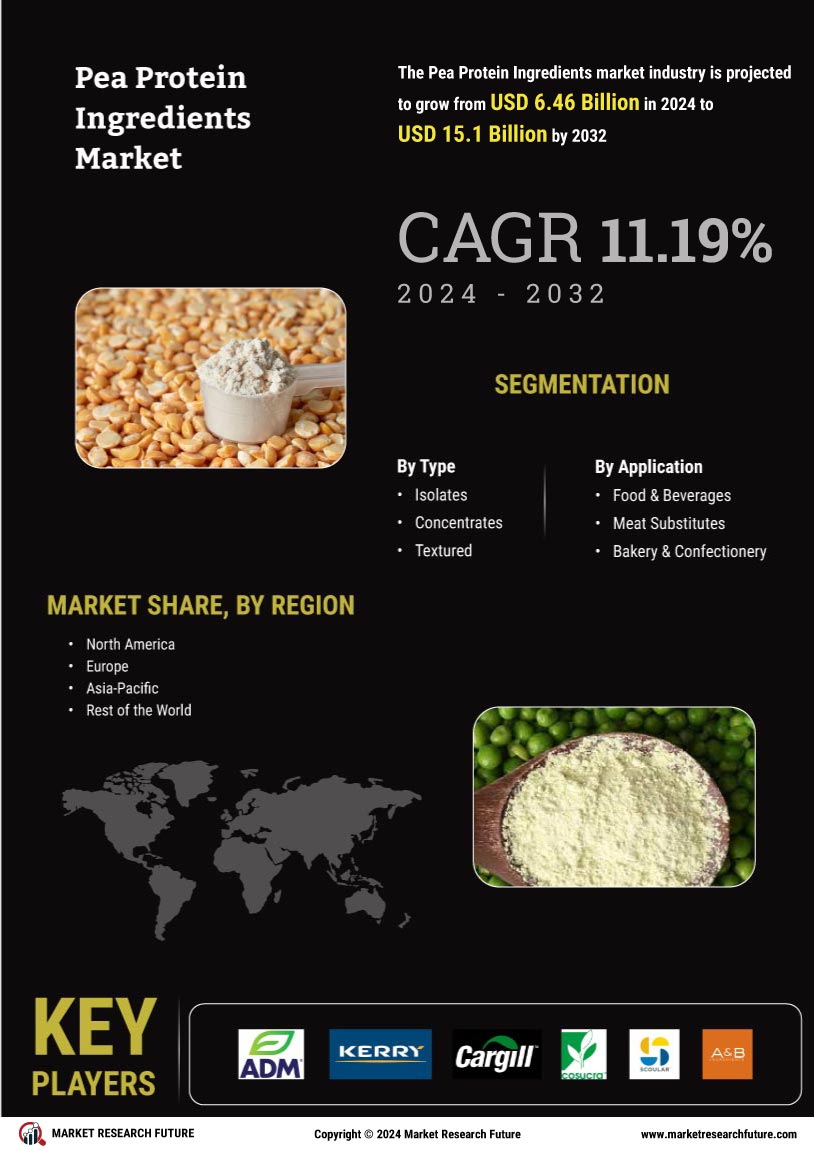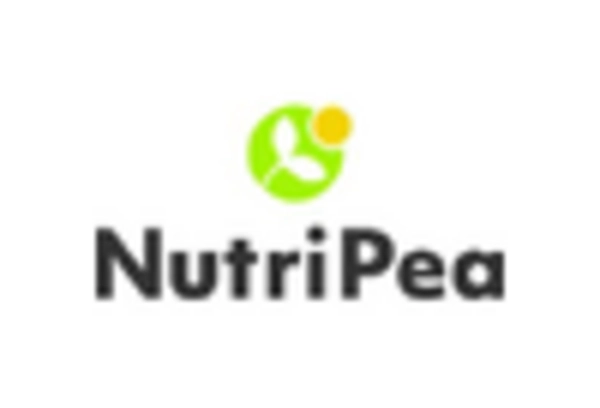The leading market players are expected to increase their market footprint during the forecast period due to investing heavily in their R&D departments. Market participants are also undertaking various strategic activities to expand their footprint, with important market developments including new product launches, contractual agreements, mergers and acquisitions, higher investments, and collaboration with other organizations. Market leaders in the Pea Protein Ingredients industry are expected to focus on increasing their yield for source materials.
Also, the Pea Protein Ingredients industry will introduce a wide range of products for their consumer groups. Furthermore, the players in the Pea Protein Ingredients industry will pool their resources to increase their output. Major Pea Protein Ingredients market players, including Archer Daniels Midland Company, Kerry Group PLC, Cargill Incorporated, Cosucra Groupe Warcoing SA, and others, are attempting to increase market demand by investing in research and development operations.
ADM is a leader in the production and processing of agricultural products and additives on a scale. ADM, founded in 1902, has expanded to become one of the leading providers of food ingredients and processors in the world, operating in more than 160 nations. ADM, which has its headquarters in Chicago, Illinois, manages a vast network of processing plants, supply chains, and logistical setups. From sourcing and processing to shipping and distribution, the organization is involved in every phase of the agricultural supply chain.
In addition to specialty food and feed ingredients, ADM's wide variety of agricultural commodities includes cereals, oilseeds, cocoa, and animal feed ingredients.
Industry leaders in agriculture, food, and nutrition include Cargill Incorporated. Cargill, founded in 1865, has become one of the biggest privately held companies in the United States, operating in more than 70 nations and employing more than 160,000 people globally. Cargill, headquartered in Minneapolis, Minnesota, conducts business in several industries, including agricultural, food ingredients, animal nutrition, and industrial goods. The company engages in various activities as part of its varied portfolio, including procuring, processing, trading, and distributing agricultural products such as grains, oilseeds, cocoa, and sugar.
Providing cutting-edge solutions and ingredients for the food and beverage sector, animal feed and nutrition products, and industrial uses is another area of expertise for Cargill. Through tasks including sourcing, storing, processing, and distributing commodities, Cargill's Agriculture business concentrates on assisting farmers and the agricultural supply chain. The organization uses its large network to assist farmers in increasing production, managing risk, and satisfying the rising demand for agricultural goods using sustainably produced raw materials.


















Leave a Comment